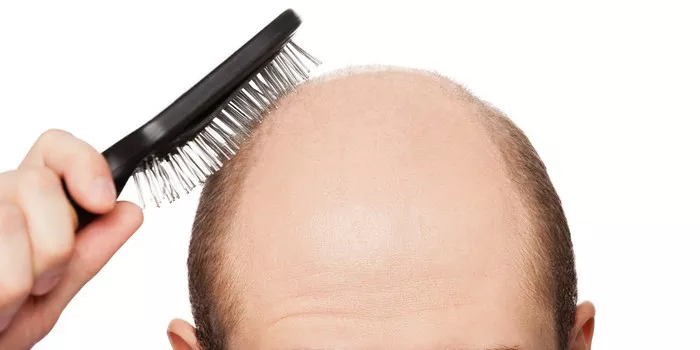Hair loss, a concern that many individuals face, can manifest in various ways. One common pattern of hair loss is a receding hairline, often associated with aging and genetic predisposition. This article serves as a visual guide to understanding what a receding hairline looks like, shedding light on its appearance, progression, and potential underlying causes.
The Evolution of a Receding Hairline
The following is the process of moving the hairline back:
1. Initial Signs
A receding hairline typically starts at the temples, where the hairline begins to move backward slightly. At this stage, you might notice a slight thinning of the hair along the edges of the forehead.
2. Widening Part
As the hair loss progresses, the part in your hair may start to widen. This occurs as the hairline continues to recede backward, creating a more noticeable gap between the hair on the sides of the head and the hair at the crown.
3. Temple Recession
With further progression, the temples can become significantly more exposed. This often results in a characteristic “M” shape forming on the forehead, as the hairline recedes further on both sides.
4. Advancement Towards the Crown
In some cases, a receding hairline can extend further toward the crown of the head, creating a more pronounced “V” shape. This pattern can vary among individuals, and the extent of hair loss depends on factors like genetics and hormonal influences.
Common Causes of Receding Hairline
Here are the causes of a receding hairline:
1. Androgenetic Alopecia (Male Pattern Baldness)
The most common cause of a receding hairline is androgenetic alopecia, also known as male pattern baldness. This genetic condition is influenced by hormones and leads to hair follicles becoming sensitive to the hormone dihydrotestosterone (DHT), causing them to shrink and produce thinner hair.
2. Hormonal Imbalances
Hormonal imbalances, such as those associated with polycystic ovary syndrome (PCOS) or thyroid disorders, can contribute to hair loss and receding hairlines in both men and women.
3. Age and Genetics
As individuals age, the likelihood of experiencing a receding hairline increases. Genetics also play a significant role; if your family has a history of hair loss, you’re more likely to experience it yourself.
Effects of a receding hairline on self-image
A receding hairline can profoundly impact self-image. Many individuals associate a full head of hair with youth, attractiveness, and confidence. Witnessing hair loss can lead to feelings of self-consciousness, lowered self-esteem, and anxiety about appearance. Some may alter hairstyles, wear hats, or seek treatments to conceal the hairline. Coping with the change can be challenging, affecting overall self-worth. It’s essential to address these emotions positively through self-acceptance, seeking support, and focusing on inner qualities. Consulting professionals or exploring styling options can help individuals navigate the psychological effects of a receding hairline.
Seeking Solutions for a Receding Hairline
Here are the solutions for a receding hairline:
1. Hair Restoration Treatments
There are various medical and non-medical approaches to address a receding hairline. These include over-the-counter minoxidil products, prescription finasteride (for men), and hair transplantation surgery.
2. Hairstyling Techniques
Hairstyling can be a powerful tool for camouflaging a receding hairline. Consult with a skilled hairstylist to explore styles that suit your hair type and help minimize the appearance of hair loss.
3. Embracing Change
Ultimately, embracing a receding hairline and choosing to rock a new look can be empowering. Many individuals find that confidence comes from owning their appearance, whether it includes a full head of hair or not.
See Also: Can Low Vitamin D Levels Lead to Hair Loss: A Full Guide
Conclusion
Recognizing a receding hairline involves observing its progression from slight thinning at the temples to the formation of an “M” or “V” shape. While a receding hairline is often linked to factors like genetics and hormonal influences, it’s important to remember that hair loss is a natural part of life for many. Whether you choose to explore treatment options or embrace your changing appearance, the journey toward self-acceptance and confidence is one worth embarking upon.


